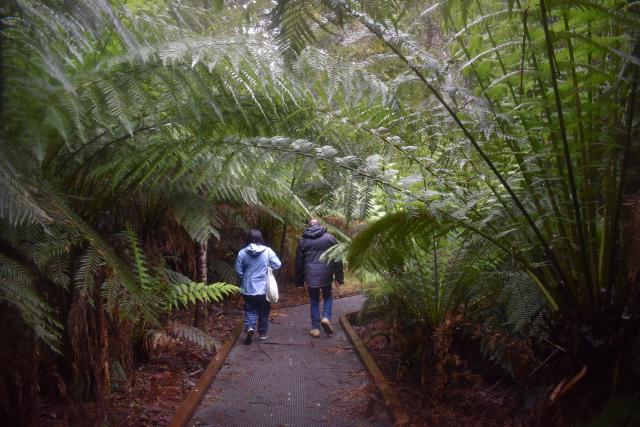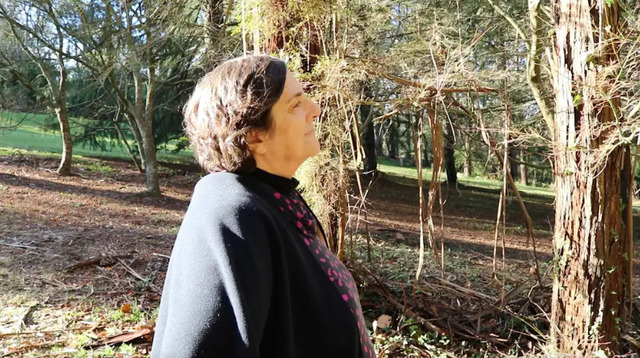Police are continuing their search for information on skeletal remains found in the Dandenong Ranges National Park more than 17 years ago.
National Missing Persons Week was held from 30 July until 5 August in 2023 and focused on eight cases involving unidentified human remains.
The Australian Federal Police (AFP)’s week long Can you solve this case? campaign featured the discovery of remains of a man found near Mount Erin Road and Janesdall Avenue on 18 March 2006.
An anthropological examination conducted identified the remains belonged to a Caucasian male, between 20 to 30 years of age with a stature between 167 and 180 centimetres tall.
Several items of clothing were discovered with the remains, including the remnants of a purple scarf, pants and shoes.
But the exhibits were severely decayed, and no other items of identification were located.
On 16 March 2012, the coroner delivered a finding which determined the male had died due to an unknown cause, sometime between February 1999 and December 2000.
In July 2022, Victoria Police released facial recognition from the Victorian Institute of Forensic Medicine (VIFM) based on a CT scan of the skull after exhausting all avenues of identification, including DNA and dental records.
Police said at the time they were hopeful a member of the community may recognise the person or have information that will help lead to the identification of the remains.
The AFP’s National Missing Persons Coordination Centre, working with state and territory law enforcement agencies, has created an online “investigative board” to provide amateur sleuths with a detailed detective’s overview of the cases.
Vital clues such as clothing and objects found at the scene of the human remains and craniofacial reconstructions can be viewed in 3D animation.
The craniofacial reconstruction highlights how the AFP uses cutting-edge technology to continue investigating old cases.
As part of its National DNA Program for Unidentified and Missing Persons (Program) capabilities, AFP forensic specialists are able to use new tools to estimate an unidentified individual’s year of birth and death, ancestral origin, hair and eye colour, facial appearance and genetic relatives.
AFP Assistant Commissioner Hans Koenderink said community members were law enforcement’s most important partners and this campaign provided them an insider’s view of the AFP’s work and forensic capabilities.
“This campaign capitalises on the increasing popularity of the “true crime” genre and, challenges the community to delve into the case files just like our AFP forensic officers do everyday,” he said.
“The AFP and state and territory police forces are this year focusing on unidentified human remains cases – as they are not just case numbers but are unknown individuals who have names, families and stories that deserve to be told.
“For these loved ones, living with the uncertainty about the whereabouts and safety of a loved one can be a traumatic experience that can last for weeks, months or, sadly, years.”
Mr Koenderink said there are 750 unidentified human remains and 2500 long-term missing persons cases.
“The community plays a critical role in helping police with information that can help to solve a missing persons case.”
The eight unidentified persons nominated by the AFP’s state and territory counterparts to be featured in this year’s campaign are located at Pyrmont (NSW), Leanyer (NT), the Stretton Wetlands (QLD), King’s Beach (SA), Mt Osmond (SA), Pardoe Beach (TAS), the Dandenong Ranges (VIC) and , Chidlow (WA).
In Australia, a missing person is defined as anyone who is reported missing to police, whose whereabouts are unknown, and where there are fears for the safety or concern for the welfare of that person. A long-term missing person is someone who has been missing for more than three months.
There were over 55,000 missing persons reports made to police in Australia in 2022, equating to nearly 150 missing reports per day.
Information relating to missing persons can be provided directly to police or anonymously via Crime Stoppers, and members of the public can help by viewing profiles of long-term missing persons at the national missing persons register at missingpersons.gov.au.
A Victoria Police spokesperson said the impact of a missing person on their loved ones is often “incredibly profound” and can be “life-changing” for those left behind.
“When we speak to families, we often hear about the cycle of grief they are trapped in that is overlaid with the frustration of not knowing what has happened,” the spokesperson said.
“With unidentified remains, we hope that the identification of those can ultimately provide a link that gives someone a level of closure and understanding.”







